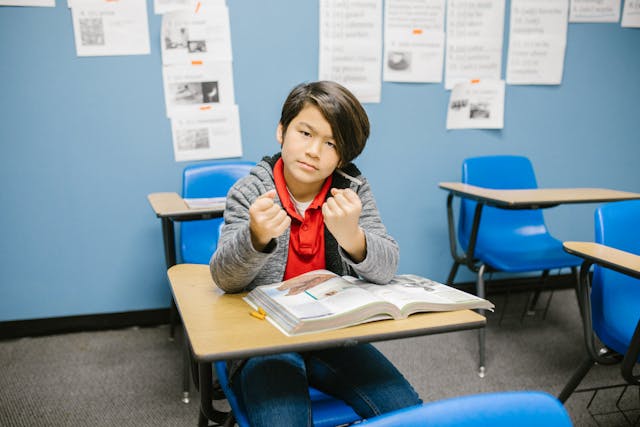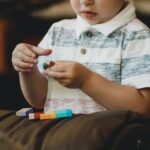
Aggressive behavior in autistic children can be challenging for both the child and their caregivers.
These behaviors can manifest in various ways, from physical outbursts to verbal aggression.
For parents and educators, it can be difficult to understand why these behaviors occur and how to effectively manage them.
However, it’s important to note that aggression is not uncommon among children with Autism Spectrum Disorder (ASD), and often, it’s a form of communication or a response to overwhelming stimuli.
Causes of Aggressive Behavior in Autistic Children
Aggression in autistic children can stem from various causes, often tied to how they experience and process the world around them.
Understanding these underlying reasons can be the first step toward finding effective solutions.
Sensory overload
One of the most common triggers for aggressive behavior in autistic children is sensory overload.
Many children with autism have heightened sensitivity to their environment.
Bright lights, loud noises, strong smells, or even certain textures can overwhelm their sensory systems.
When this happens, the child may lash out physically or verbally, not because they want to, but because they are overwhelmed and don’t know how else to express their discomfort.
Communication difficulties
Another significant cause of aggressive behavior is communication difficulties.
Many children with autism struggle to express themselves verbally, which can lead to frustration.
When they are unable to articulate their needs, feelings, or discomfort, aggression may become their way of communicating.
For instance, if a child is hungry or in pain but cannot express that, they might hit or scream as a way to signal distress.
According to studies, approximately 40% of children with autism are non-verbal or have limited speech, making communication one of the key challenges they face.
This communication gap can lead to misunderstandings, further fueling frustration and aggressive behavior .
Frustration and anxiety
Children with autism often experience heightened anxiety and frustration when faced with changes in routine or environments that they don’t fully understand.
Transitions between activities, new experiences, or unmet expectations can trigger anxiety, leading to aggressive outbursts.
Even minor changes that may seem trivial to neurotypical children—like a change in the day’s schedule—can provoke intense reactions from a child with autism.
Underlying medical conditions
Sometimes, aggressive behavior may be linked to underlying medical conditions.
Conditions such as gastrointestinal issues, sleep disturbances, or chronic pain can be difficult for a child with autism to explain.
Studies indicate that gastrointestinal problems, in particular, are common in children with autism, affecting about 50-80% of children on the spectrum .
When these conditions go unrecognized, they can lead to discomfort and irritability, increasing the likelihood of aggressive behavior as the child tries to cope with their pain in the only way they know how.

Recognizing Signs of Aggressive Behavior
Identifying aggressive behaviors early is essential for addressing them before they become more serious.
Aggressive behaviors can differ from child to child, especially among those with autism.
Here are some common forms of aggression to watch for:
Physical aggression
Physical aggression is one of the most noticeable types of aggressive behavior.
This may involve actions like hitting, biting, kicking, or scratching others.
Sometimes, this aggression is directed toward adults, peers, or siblings.
In other cases, the child might lash out by breaking or destroying objects around them.
Verbal aggression
Some autistic children may express aggression through verbal outbursts, such as yelling, screaming, or name-calling.
These reactions are often triggered by feelings of frustration, sensory overload, or confusion in social situations.
In unfamiliar environments, these verbal expressions can escalate into more disruptive behaviors.
Property destruction
Many autistic children may express their frustration by damaging property.
This can include knocking over furniture, breaking toys, or damaging other items.
Such destructive behavior often arises from emotions the child is unable to express in a more positive or constructive way.
Self-injurious behavior
Self-injurious behavior is another concerning form of aggression.
This might involve the child hitting themselves, banging their head, biting, or scratching their own skin.
These actions often signal extreme distress or sensory overload, making it crucial to intervene promptly to prevent further harm.

Strategies for Managing Aggressive Behavior in Autistic Children
Managing aggressive behavior in autistic children requires a calm, patient, and thoughtful approach.
Here are several effective strategies that can help reduce these behaviors:
Identifying triggers
The first step in managing aggression is to identify what triggers the behavior.
Understanding what causes the child to become aggressive—whether it’s sensory overload, frustration, or changes in routine—can help you intervene before the situation escalates.
Keeping a diary of when aggressive incidents occur and noting any common patterns can be very helpful in predicting and preventing future outbursts.
Teaching alternative communication
If communication challenges contribute to aggression, introducing alternative ways for the child to express themselves can be very effective.
This might include using sign language, picture exchange communication systems (PECS), or augmentative and alternative communication (AAC) devices.
These tools allow children to express their needs without resorting to aggressive behavior.
Research shows that when children have alternative communication options, their aggressive behaviors often decrease significantly.
Creating a safe environment
For children who are sensitive to sensory input, creating a sensory-friendly environment is crucial.
This could involve reducing bright lights, minimizing loud noises, or setting up a calm space where the child can retreat when feeling overwhelmed.
Providing noise-canceling headphones or sensory toys can also help them manage their sensory experiences more effectively.
Positive reinforcement
Using positive reinforcement is a great way to encourage desired behaviors and reduce aggression.
When a child expresses themselves appropriately or handles a challenging situation without becoming aggressive, praise them or offer a small reward.
Over time, this approach encourages the child to adopt more constructive ways of coping with frustration.
Professional support
If aggressive behaviors continue despite these efforts, it may be helpful to seek assistance from a behavioral therapist.
Therapies like Applied Behavior Analysis (ABA) and cognitive-behavioral therapy (CBT) are designed to help children with autism manage their emotions and reduce problematic behaviors.
ABA, in particular, is well-known for its effectiveness in decreasing aggression and teaching essential social and communication skills.

Final Thoughts
Aggressive behavior in autistic children can be challenging, but with patience, understanding, and the right strategies, it can be managed effectively.
By identifying the causes of aggression—whether it’s sensory overload, communication struggles, or underlying medical conditions—parents and caregivers can develop a plan that helps the child express themselves in healthier ways.
Providing a supportive, structured environment and teaching alternative communication methods are essential steps toward reducing aggression and helping children with autism thrive.


